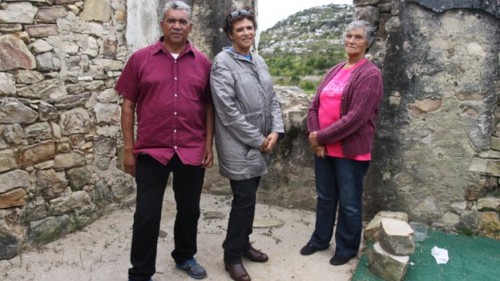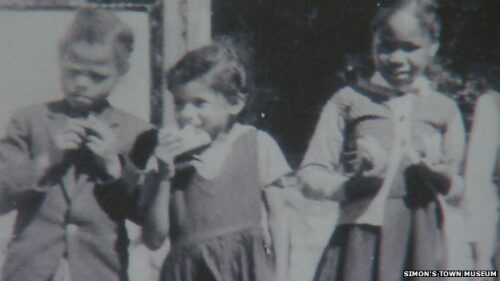South Africans Battle To Overturn Apartheid Evictions
Share
Explore Our Galleries
Breaking News!
Today's news and culture by Black and other reporters in the Black and mainstream media.
Ways to Support ABHM?
By: Sofie Ribstein, BBC News

At the far end of the African continent, Redhill was once a village, home to more than 70 predominantly mixed-race (or coloured, as they are referred to in South Africa) families.
But stone walls are still standing, reminders of a precious past for those who were forcibly removed in the late 1960s by South Africa’s white minority regime.
“Here was the lounge and this used to be the kitchen with a fireplace and the small bedroom at the back,” says 78-year-old Lily Lawrence, walking through the old stones which were once her home.
The Group Areas Act, passed in 1950, was a pillar of the brutal apartheid regime.
Among other things, it led to the removal of non-whites from real estate considered desirable by the government. Over the following decades, thousands of families were forced to leave their homes and relocate to barren land.
The effects of this policy have yet to be reversed. Even in post-apartheid South Africa, much of the most fertile territory is still in the hands of a few thousand white commercial farmers.
Just after his re-election to a second term in office in May, South African President Jacob Zuma announced the creation of another window for lodging claims for the restitution of land.
Under the 1950 law, Mrs Lawrence, her husband and their four children had no other choice but to leave their land.
“It was so heartbreaking, tears, tears and tears,” says Mrs Lawrence, recalling the day they left. She says the family had to leave much of their furniture behind – including heirlooms – as it could not be taken up the stairs of the flat they were moving to.
Today, two of her children, Margaret and George, are doing everything possible for this past not to be forgotten. They were only eight and 13 years old when they left Redhill.
But the trauma of the forced removal remains. Margaret is an archivist at the Simon’s Town Museum. She collects pictures, texts, memories from the coloured community and tries to piece together their history.
She invites her mother to the museum to talk to schoolchildren. Twenty years after the end of apartheid, she wants the new generation to know what happened.
George, her brother, has embarked on a legal journey, trying to get the land back from the South African state. He says he registered the first land claim in 1998 – but since then, has only been to meetings and offered excuses for inaction.
“The only thing I want in my life is to come back to my land. I was born here, my roots are here. It is not so difficult, the government just has to sign the papers.”
Since President Zuma announced another window for the restitution, another 12,500 new claims have been lodged, according to the government-backed Land Claims Commission.
Read the full article here.
Read more Breaking News here.











Comments Are Welcome
Note: We moderate submissions in order to create a space for meaningful dialogue, a space where museum visitors – adults and youth –– can exchange informed, thoughtful, and relevant comments that add value to our exhibits.
Racial slurs, personal attacks, obscenity, profanity, and SHOUTING do not meet the above standard. Such comments are posted in the exhibit Hateful Speech. Commercial promotions, impersonations, and incoherent comments likewise fail to meet our goals, so will not be posted. Submissions longer than 120 words will be shortened.
See our full Comments Policy here.